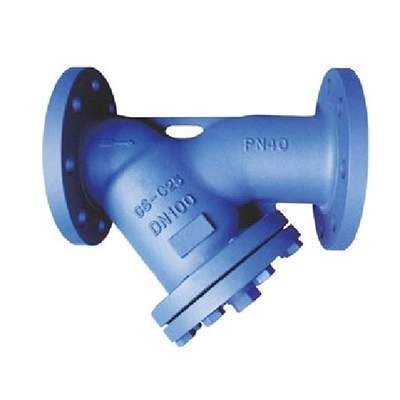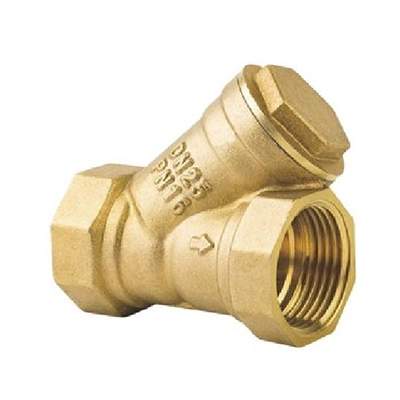Welcome to My Blog!
Before we dive into the content, I’d love for you to join me on my social media platforms where I share more insights, engage with the community, and post updates. Here’s how you can connect with me:
Facebook:https://www.facebook.com/profile.php?id=61563865935136
Now, let’s get started on our journey together. I hope you find the content here insightful, engaging, and valuable.
Introduction

Y-type strainers represent a crucial component in various industrial and commercial fluid handling systems. Their primary function is to protect downstream equipment, such as pumps, meters, valves, and regulators, from damage caused by unwanted solid particles present in the fluid flow. These seemingly simple devices play a vital role in ensuring the longevity, efficiency, and reliability of entire systems by effectively removing debris like rust, scale, sand, and other particulate matter. Understanding the fundamental principles and selection criteria for a y-type strainer is essential for engineers, plant operators, and anyone involved in fluid processing. This guide aims to provide a comprehensive overview of y-type strainers, covering their design, operation, selection process, maintenance, and frequently asked questions. By delving into the intricacies of choosing the right y-type strainer, we can help you optimize your system’s performance and minimize downtime.
Understanding the Basic Design and Operation of a Y-Type Strainer
The distinctive Y-shape of the y-type strainer body is not merely aesthetic; it is integral to its functionality. This design incorporates a main pipeline connection and a side branch angled typically at 45 or 60 degrees. Within this angled branch resides the strainer element, usually a perforated screen or a wire mesh, which is responsible for trapping the solid particles as the fluid flows through the main body. The fluid enters the y-type strainer, passes through the screen, and exits clean, while the contaminants are retained within the strainer body. A removable cap or plug on the angled branch allows for easy access to the screen for cleaning or replacement. The simplicity of this design contributes to the y type strainer’s reliability, ease of maintenance, and cost-effectiveness, making it a popular choice across a wide range of applications.
Key Factors to Consider When Selecting a Y-Type Strainer
Choosing the appropriate y-type strainer for a specific application requires careful consideration of several critical factors. Overlooking these aspects can lead to inefficiencies, increased maintenance, or even system failures. The following are some of the most important parameters to evaluate:
Material Compatibility with the Process Fluid
The material of construction of the y type strainer body and screen must be chemically compatible with the fluid being processed. Incompatible materials can corrode or degrade over time, leading to leaks, contamination, or structural failure. Common materials include carbon steel, stainless steel (various grades like 304 and 316), brass, bronze, and plastics such as PVC and CPVC. Factors such as the fluid’s chemical composition, temperature, and pressure should guide the material selection process to ensure the longevity and integrity of the y-type strainer.
Determining the Appropriate Size and Connection Type of the Y Type Strainer
The size of the y-type strainer and its connection type must match the existing pipeline. Incorrect sizing can lead to excessive pressure drop or inadequate flow rates. Common connection types include threaded (NPT, BSP), flanged (ANSI, DIN), and socket weld. The nominal pipe size (NPS) or diameter (DN) of the pipeline dictates the required size of the y type strainer. It is crucial to select a y-type strainer with the same connection type and size as the pipeline to ensure a proper and leak-free installation.
Selecting the Optimal Mesh Size or Perforation Size for the Y-Type Strainer Screen
The mesh size or perforation size of the strainer screen is critical for effective particle removal. This is determined by the size of the particles that need to be filtered out and the acceptable pressure drop across the y-type strainer. A finer mesh or smaller perforation size will capture smaller particles but will also result in a higher pressure drop and may require more frequent cleaning. Conversely, a coarser screen will have a lower pressure drop but may allow smaller, potentially damaging particles to pass through. Careful analysis of the fluid composition and the sensitivity of the downstream equipment is necessary to select the optimal screen size for the y-type strainer. Mesh size is typically measured in terms of the number of openings per inch (mesh), while perforation size is usually specified in millimeters or microns.
Evaluating the Pressure and Temperature Requirements for the Y-Type Strainer
The y-type strainer must be able to withstand the operating pressure and temperature of the system. Exceeding the pressure or temperature rating of the strainer can lead to catastrophic failure. The maximum allowable working pressure (MAWP) and the maximum operating temperature of the y-type strainer are usually specified by the manufacturer and should be carefully considered during the selection process. These ratings should always be equal to or greater than the maximum operating conditions of the system to ensure safe and reliable operation of the y-type strainer.
Considering the Flow Rate and Pressure Drop Across the Y-Type Strainer
The flow rate of the fluid through the system and the allowable pressure drop across the y-type strainer are important factors in the selection process. An undersized y-type strainer or one with a very fine screen can cause a significant pressure drop, leading to reduced system efficiency and increased energy consumption. Manufacturers typically provide flow coefficient (Cv) values for their strainers, which can be used to calculate the pressure drop at a given flow rate. Selecting a y-type strainer that can handle the required flow rate with an acceptable pressure drop is crucial for optimal system performance.
Maintenance and Accessibility of the Y-Type Strainer
Ease of maintenance is another important consideration. The y-type strainer should be installed in a location that allows for easy access to the removable cap or plug for cleaning or replacing the screen. The frequency of cleaning will depend on the amount of particulate matter in the fluid. Systems with high levels of contamination may require more frequent maintenance. Features such as quick-release clamps or large drain ports can simplify the maintenance process for the y-type strainer.
Different Materials Used in Y-Type Strainer Construction
The choice of material for a y-type strainer is primarily dictated by the chemical compatibility with the process fluid and the operating temperature and pressure. Here’s a closer look at some common materials:
- Carbon Steel: A cost-effective option for non-corrosive fluids and moderate temperature and pressure applications. It may require coatings or linings for certain fluids.
- Stainless Steel (304/304L): Offers excellent corrosion resistance to a wide range of chemicals and is suitable for higher temperature and pressure applications compared to carbon steel. Commonly used in food processing, pharmaceutical, and chemical industries.
- Stainless Steel (316/316L): Provides even better corrosion resistance than 304, particularly against pitting and crevice corrosion, especially in chloride-containing environments. Often preferred for marine and aggressive chemical applications.
- Brass and Bronze: Commonly used for water and other non-aggressive fluids in plumbing and HVAC systems. They offer good corrosion resistance and machinability.
- Plastics (PVC, CPVC, Polypropylene): Suitable for corrosive fluids at lower temperatures and pressures. They are lightweight and cost-effective for certain applications.
The selection of the appropriate material ensures the longevity and reliability of the y-type strainer in its specific operating environment.
Understanding Different Types of Y-Type Strainer Screens
The strainer screen is the heart of the y-type strainer, responsible for capturing the unwanted particles. Different types of screens are available to suit various filtration requirements:
- Perforated Screens: These screens have precisely sized holes and are typically used for removing larger particles. They offer good strength and are easy to clean. The perforation size can be specified based on the minimum particle size to be removed.
- Wire Mesh Screens: Woven from metal wires, these screens offer finer filtration capabilities compared to perforated screens. The mesh size, indicated by the number of openings per inch, determines the size of particles that can be captured. Different weaving patterns and wire diameters can be selected based on the application.
- Wedge Wire Screens: Constructed from triangular profile wires welded onto support rods, these screens offer excellent strength, high open area, and resistance to clogging. They are often used in demanding applications with high solids content.
The choice of screen type and its specific dimensions (perforation size or mesh size) directly impacts the filtration efficiency and the pressure drop across the y-type strainer.
Common Applications of Y-Type Strainers Across Industries

Y-type strainers are versatile and find widespread use across various industries due to their simple design, effectiveness, and ease of maintenance. Some common applications include:
- Water Treatment: Removing sand, silt, and other particulate matter from raw water sources to protect pumps and downstream equipment in municipal and industrial water treatment plants.
- Chemical Processing: Filtering out solid contaminants from various chemical solutions to protect sensitive equipment and ensure product purity.
- Oil and Gas: Removing debris from crude oil, natural gas, and other petroleum products to protect pipelines, pumps, compressors, and other critical equipment.
- Power Generation: Filtering cooling water and process fluids to prevent fouling and damage to heat exchangers, boilers, and turbines.
- Food and Beverage: Removing solid particles from liquid food products and process water to ensure product quality and protect processing equipment.
- Pharmaceuticals: Ensuring the purity of process fluids and protecting sensitive equipment in pharmaceutical manufacturing.
- HVAC Systems: Filtering water in heating and cooling loops to prevent clogging of pipes, valves, and heat exchangers.
- Irrigation Systems: Removing sand and other debris from irrigation water to prevent clogging of emitters and protect pumps.
The adaptability of the y-type strainer makes it an indispensable component in numerous fluid handling applications.
Conclusion
Selecting the correct y-type strainer is a critical decision that directly impacts the efficiency, reliability, and longevity of your fluid handling systems. By carefully considering the fluid characteristics, operating conditions, and system requirements, you can choose a y-type strainer that effectively removes unwanted particles, protects your valuable equipment, and minimizes downtime. Don’t compromise on system protection. Contact us today to discuss your specific needs and find the perfect y-type strainer solution for your application. We are here to help you ensure smooth and efficient operations.
FAQ
Q: What is the primary purpose of a y-type strainer?
A: The primary purpose of a y-type strainer is to remove solid particles from fluid flow to protect downstream equipment from damage and ensure system efficiency.
Q: How does a y-type strainer work?
A: Fluid flows through the main body of the y-type strainer and passes through a screen located in the angled branch. Solid particles are trapped by the screen, while the clean fluid exits. The accumulated debris can be removed by accessing the screen through a removable cap or plug.
Q: What factors should I consider when choosing a y-type strainer?
A: Key factors to consider include material compatibility with the fluid, the size and connection type of the pipeline, the required mesh or perforation size of the screen, the operating pressure and temperature, the flow rate and allowable pressure drop, and ease of maintenance.
